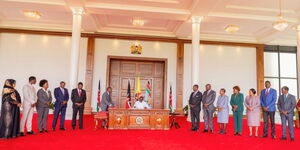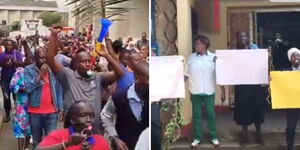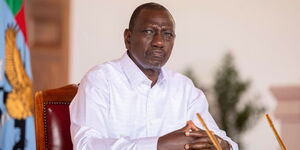The Affordable Housing program has come with great benefits to Kenyans all over the country as the government seeks to sort out the deficit in the country.
Under President William Ruto's Bottom Up Economic Transformation Agenda (BETA), the program seeks to provide housing to Kenyans who are at the bottom of the economic pyramid.
The affordable housing program seeks to build 250,000 housing units every year and is geared towards facilitating the production of decent, safe and affordable housing for citizens of Kenya.
Beyond catering to home applicants, the program incorporates supply, demand, and creates an enabling environment through policy interventions.
So far, affordable housing projects across the country have been launched and are set to open in due course. The biggest of them all, the Mukuru Housing Project, which will have over 100,000 housing units in total, is set to welcome its first batch of over 13,000 tenants in late 2024/early 2025 as it nears completion.
Other affordable housing projects in the country include projects in Kibera, Shauri Moyo, Bungoma, Meru, Uasin Gishu, Thika, Machakos, Kwale among many others.
Housing in Kenya has been a thorn in the government’s flesh since time immemorial. The housing crisis manifests heavily in urban areas. A 2017 report by the World Bank on Housing in Kenya revealed that about 6.4 million Kenyans lived in slums, representing about 56 percent of the urban population. In the capital city of Nairobi, the study found that 91 percent of the population was renting as home ownership was out of reach.
Furthermore, a report in 2019 by the Center for Affordable Housing Finance Africa found that Nairobi was the most expensive in Africa to build a standard affordable house due to the associated costs such as land, infrastructure, compliance costs, construction costs, development costs, overhead costs and Value Added Tax (VAT).
The Affordable Housing program aims to alleviate this crisis and ease the burden of home ownership. A great number of the projects are constructed through Public-Private Partnerships that are meant to attract foreign and local investors.
To this effect, the government has introduced key interventions that are meant to facilitate this. These include; zero rating cost of land, zero rating cost of infrastructure, multiple tax exemptions and lower cost of financing. These four interventions directly impact the cost of house construction, thus reducing costs of acquiring the houses. According to the State Department of Housing and Urban Development, the interventions have reduced the price of units from Ksh11 million in 2017 to Ksh 3 million in 2024.
At the core of the Affordable Housing program is to eradicate the prevalence of slums/informal urban settlements such as Kibera, Shauri Moyo and Mukuru kwa Reuben. The housing units are set to go for as low as Ksh. 5000 with a favorable mortgage payment period of 30 years.
While speaking recently in an event in State House, President William Ruto reiterated the government’s commitment to do away with slums.
"In the next 15 years, we will have gotten rid of slums in Kenya. By God's grace, we will make sure that citizens have decent dwelling," he said.












